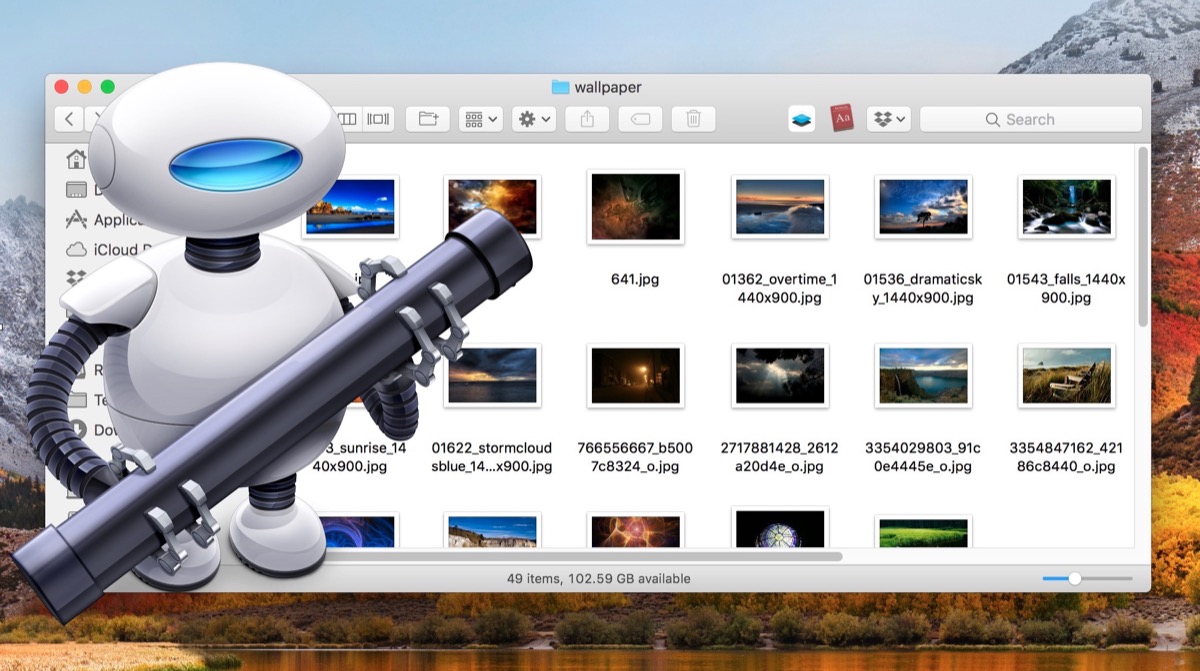

– see the Bash Reference Manual’s chapter on Pattern Matching for an explanation of how this works (recommended reading for this kind of operation anyway :)). Insert the following code: shopt -s extglob
Automator macos software#
After setting them up through the macOS Automator, you can find Quick Action workflows on the Finder menu, Services menu, or the MacBook Touch Bar.There is no need for dedicated file renaming software to do such relatively simple batch renaming operations – Automator will allow you to create services that do what you want. Quick Action workflows make it easier to perform often repeated tasks.
Automator macos mac#
Automator macos pro#
To utilize Quick Actions Workflows on your MacBook Pro Touch Bar, you must first add the Quick Actions button by following these directions: Choose the location to send your files under the Copy Finder Items pull-down.Īdding Quick Action Workflows to Touch Bar.Select to PNG under the pull-down menu under Change Type of Images.I suggest choosing Add, not Don’t Add, so the original file remains. In the pop-up, you must decide whether to add an action to copy the image (thereby preserving the original in the process) or skipping over that step. Click Change Type of Images from the middle column, then drag to the right side of the window.Choose Photos from the left panel under Actions.With a custom Quick Action, I can automate this process.

To convert images to PNG from JPG, I typically use Mac Preview. Unfortunately, most of the images I find for use in articles are in JPG format. Quick Action Workflow: An ExampleĪt GroovyPost, we’re asked to convert images to PNG format. It’s also available in the Service menus and under Quick Actions in the Touch Bar, when applicable, as you can see below. Once a Quick Action gets created, the Action pop-up menu appears at the top of a Finder window or the bottom of the Finder window preview pane in Column or Gallery view. Choose File > Save to keep the workflow. Name the workflow, then save.Color: A color for your Quick Action (visible in the Touch Bar only).You can select an image on your Mac or choose an image from the menu. Image: An image for your Quick Action.Output replaces selected text: When the workflow receives input from Text or Rich Text, you can specify that the output replaces the selected text.Input is: If the workflow receives input from URLs, addresses, phone numbers, dates, or email addresses, you can specify different input options.Each app must be open for the workflow to be available. Application: The app or apps you want to use to process your workflow.Note: Only Quick Actions that receive files as input are available in Finder windows. If you choose Automatic, Automator guesses the type of input you want to use in your workflow. Workflow receives current: The type of data used as input to the workflow.Choose Automator from the Applications folder on your Mac.Īt the top of the screen, you can specify any of the following:.From there, you’ll configure actions, then save your workflow.įollow these steps to get started with Quick Flow workflows: On the left side of the app, you’ll find the library pane to add on or more actions to the workflow, located on the right side of the Automator window.

If you haven’t used Automator previously, it’s relatively painless. It’s important to understand how Automator is put together before moving on to Quick Actions. Otherwise, the automatic task cannot proceed. Some of these actions (but not all) require types of input to proceed. Long present in macOS, Automator makes it possible to accomplish tasks by stringing together necessary actions.


 0 kommentar(er)
0 kommentar(er)
